Nepal Earthquake by Abir Abdullah
text by ?Photographer Syed Latif Hossain?

Our sub-continent is now emerging from a crucial experience of its history. This history narrates defining moments captured in epic tragedy, inflicted wounds that are slowly fortifying, and material and spiritual loss that would be embalmed in the hearts of generations. On a seemingly normal weekend day as people went about their business, the earth in Nepal shook up its natives to the point of unfamiliarity. An earthquake, that registered 7.8 on the Richter scale. It caused many people to flee and it rendered many others immobile; and it caused hearts to freeze as they witnessed their world crumbling around them. A sea of hearts, many which remained trapped in the sea of rubble, with their homes, their temples and their loved ones. Continue reading “Resilience and Reasons”
Tag: Nepal
The valley of Bhaktapur

Growing up in Kathmandu was magical. At the time, literally a small quaint Kingdom. A home with a small cow shed and an orchard in the backyard. A larger than life tree towering over an old temple, stretching it’s long arms over the entire neighbourhood. At dawn the sounds of brobdingnagian temple bells, struck loud enough to invoke the gods from their sleep. All that against the backdrop of a cacophony of the zillion birds that lived on this tree. Giant wheel chariots, living goddesses and royal processions. The infamous Titaura (local sweet and spicy candy) for which would endeavour any Everest. Demons and Yeti’s were still real and come autumn, the breeze would fill the skies with kites. Not a day went by without adventure.
Photo by @sumitdayal
#nepalphotoproject?#
Situation Report: Dhaka, April 26, 2015: Hazard Type: Earthquake
Location : Nepal, India and Bangladesh
: Nepal, India and Bangladesh
Reporting Period: 26 April?15
Location : Nepal, India and Bangladesh
: Nepal, India and Bangladesh
Detail Information :
:
An earthquake rattled the Dhaka, Chittagong, Barisal, Rajshahi, Dinajpur, Rongpur, Kushtia and different parts of the country on April, 25. The 7.8 magnitude earthquake’s epicenter was 81 kilometers (50 miles) northwest of Kathmandu, Nepal at a depth of 9.3 moles. The Meteorological Department stated that the epicenter of the earthquake was 745 km north-west of Bangladesh. Tremors were felt also across the region, in India, Tibet, China, Tibet and Pakistan (Prothom Alo; bdnews24.com; the Daily Star, April, 25; and CNN, April, 26).
parts of the country on April, 25. The 7.8 magnitude earthquake’s epicenter was 81 kilometers (50 miles) northwest of Kathmandu, Nepal at a depth of 9.3 moles. The Meteorological Department stated that the epicenter of the earthquake was 745 km north-west of Bangladesh. Tremors were felt also across the region, in India, Tibet, China, Tibet and Pakistan (Prothom Alo; bdnews24.com; the Daily Star, April, 25; and CNN, April, 26).
Another Earthquake followed the earlier one as an aftershock at 13.08 on 26th April to hit Nepal with a magnitude of 6.7 along with Bangladesh and India (Prothom Alo; bdnews24.com; the Daily Star, April, 26; and CNN, April, 26).
as an aftershock at 13.08 on 26th April to hit Nepal with a magnitude of 6.7 along with Bangladesh and India (Prothom Alo; bdnews24.com; the Daily Star, April, 26; and CNN, April, 26).
Damage Information :
:
Bangladesh: In Bangladesh, total 5 people were killed and up to 100 people were injured while evacuating. One female was killed by collapse of wall made of mud along with other two women were killed in Pabna and Dhaka. One worker was killed along with 50 injuries in Savar. Another death toll occurred in Sunamganj. 50 readymade garment workers were injured at Ishwardi (Situation Report, DDM, April 25; Prothom, April, 26). 23 buildings
women were killed in Pabna and Dhaka. One worker was killed along with 50 injuries in Savar. Another death toll occurred in Sunamganj. 50 readymade garment workers were injured at Ishwardi (Situation Report, DDM, April 25; Prothom, April, 26). 23 buildings were damaged in all over Bangladesh (Situation Report, DDM, and April, 25).
were damaged in all over Bangladesh (Situation Report, DDM, and April, 25).
| Earthquake, 25 April: Damage and loss in Bangladesh | ||
| Death | Injury | Structural Damage |
4 persons died (1 inSavar, Dhaka; 1 in Bogra; 1 in Sunamganj; &1 in Pabna) died (1 inSavar, Dhaka; 1 in Bogra; 1 in Sunamganj; &1 in Pabna) |
? 10-12 workers injured atMission Group Garment GarmentFactory in Savar ? 2-3 workers injured at Kardena garment in Comilla |
? Five story building develops?cracks in Bangla Bazar, Dhaka? Six story building tilted in Nawabpur, Dhaka ? Five story building  tilted in Mirpur, Dhaka tilted in Mirpur, Dhaka? Seven story building tilted in Keraniganj, Dhaka. ? A hotel  tilted in Baridhara , Dhaka tilted in Baridhara , Dhaka? 2 commercial buildings  tilted in Narayanganj tilted in Narayanganj? 1 garment factory tilted in Gazipur ? 1 school  damaged in Gopalganj damaged in Gopalganj? 10 story commercial building with cracks in Feni ? A building with?cracks in Nabiganj, Sylhet ? A school tilted in Gangachara upazila, Rangpur ? 2 schools damaged in Gaibandha ? 2 buildings damaged in Rajshahi ? 4 buildings tilted in Naogaon ? Crack found at school in Sonatola, Bogra |
| Source: Disaster situation report, DDM, April, 25, 2015 | ||
Nepal: The 7.8 magnitude quake along with a strong
with a strong aftershock of magnitude 6.6 followed by nearly three dozen other aftershocks struck an area of central Nepal between the capital, Kathmandu, and the city of Pokhara on Saturday morning (April 25, 2015). The Home Ministry identifies that more
aftershock of magnitude 6.6 followed by nearly three dozen other aftershocks struck an area of central Nepal between the capital, Kathmandu, and the city of Pokhara on Saturday morning (April 25, 2015). The Home Ministry identifies that more than 2263 people were killed and 4,718 people were injured (till 17.00, CNN, April 26) which mainly include only information
than 2263 people were killed and 4,718 people were injured (till 17.00, CNN, April 26) which mainly include only information of cities. The earthquake flattened homes, buildings and temples, causing widespread damage along
of cities. The earthquake flattened homes, buildings and temples, causing widespread damage along with wrecking many historic buildings include the Dharahara tower, the landmark nine- story structure. Kathmandu airport was shut till 4 pm, Indigo, SpiceJet flights forced back after fresh tremors jolt Nepal (India today
with wrecking many historic buildings include the Dharahara tower, the landmark nine- story structure. Kathmandu airport was shut till 4 pm, Indigo, SpiceJet flights forced back after fresh tremors jolt Nepal (India today April, 26) Mobile phones, Electricity and other communications were disrupted. Around 6.6 million people are affected in Nepal according to the UN Office in Kathmundu (India today
April, 26) Mobile phones, Electricity and other communications were disrupted. Around 6.6 million people are affected in Nepal according to the UN Office in Kathmundu (India today April, 26). The Government of Nepal declared the National Emergency. (ekantipur.com, April, 26)
April, 26). The Government of Nepal declared the National Emergency. (ekantipur.com, April, 26)
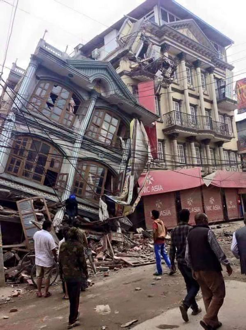
Building tilted due to earthquake in Nepal
tilted due to earthquake in Nepal
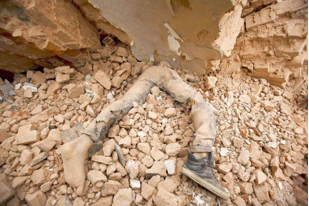 ? A man trapped under a building
? A man trapped under a building in Nepal
in Nepal
Government of Bangladesh provided 10 tons of reliefs including food (biscuit, water, and dry foods), medical (medicine) and humanitarian help (tent, blanket) along with a team of 34 members consisted of
consisted of
6 groups of physicians and Bangladesh Air force crew (bdnews24.com, April, 26; Prothom Alo, April, 26).
of physicians and Bangladesh Air force crew (bdnews24.com, April, 26; Prothom Alo, April, 26).
The U.S. government is providing $1 million in immediate assistance to Nepal. Aid agencies expressed concern for the welfare of survivors in the coming days, as overnight temperatures were expected to drop and people were forced to make do without electricity, running water and shelter. (US Geological Survey, CNN, April, 26; BBC News, April 26 and Prothom Alo, April 25).
to drop and people were forced to make do without electricity, running water and shelter. (US Geological Survey, CNN, April, 26; BBC News, April 26 and Prothom Alo, April 25).
The UK has deployed a team of humanitarian experts to Nepal to provide urgent support. A number of
urgent support. A number of
British charities are assembling disaster teams to join the rescue effort.
Oxfam, Christian Aid, Save the Children, the British Red Cross and Plan International UK are assessing the humanitarian need in the disaster struck area.
the Children, the British Red Cross and Plan International UK are assessing the humanitarian need in the disaster struck area.
India: Officials in India confirmed at least 52 deaths in three states from the Earthquake. (bdnews24.com, April, 26)
at least 52 deaths in three states from the Earthquake. (bdnews24.com, April, 26)
Tibet: At least 17 people were killed and 53 injured along with roads buckled and buildings collapse in
collapse in
Tibet. (bdnews24.com, April, 26
Avalanches in Himalayan: Twenty two (22) people have killed along with 237 missing on Mount Everest by avalanches caused by the Earthquake, the mountain’s worst-ever disaster (BdNews.24.com, April, 26)
(22) people have killed along with 237 missing on Mount Everest by avalanches caused by the Earthquake, the mountain’s worst-ever disaster (BdNews.24.com, April, 26)
Reporting from: NIRAPAD Secretariat
4/16 (1st Floor), Humayun Road, Block-B
Mohammadpur, Dhaka-1207
Bangladesh
Download pdf
Film South Asia '13 Call for Entries
 Calling for entries for the ninth edition of Film Southasia ?13, the festival of Southasian documentaries. The festival will be held in Kathmandu, Nepal from 3-6 October 2013.
Calling for entries for the ninth edition of Film Southasia ?13, the festival of Southasian documentaries. The festival will be held in Kathmandu, Nepal from 3-6 October 2013.
Film Southasia (FSA) is a biennial festival that was set up in 1997 with the goal of popularising the documentary so that it entertains, informs and changes lives. In addition to the festival that takes place in Kathmandu every two years, FSA organizes screenings, discussions and workshops across Southasia to promote Southasian non-fiction within the Subcontinent and around the world. Film Southasia believes that film is a powerful medium that helps to not only in better represent the region internationally, but also contributes immensely in introspection and initiatives to bring change at the local level. Continue reading “Film South Asia '13 Call for Entries”
NayanTara Gurung Kakshapati at Chobi Mela VII




NayanTara Gurung Kakshapati
NayanTara Gurung Kakshapati, photo.circle
Presentation: ?Retelling histories; creating an archive for family photo albums in Nepal? by Nepal Picture Library
Monday, 28 January, 11AM, EMK Center
In 2007, NayanTara co-founded photo.circle; a photography collective that has created a vibrant platform for emerging and professional photographers in Nepal. photo.circle offers Nepali photographers learning opportunities through workshops and creates space for photographers to exhibit, publish and market their work in Nepal, the region and internationally.
Visit NayanTara Gurung Kakshapati?s website:?http://www.nayantara.com.np/
Visit photo.circle?s website:?http://www.photocircle.com.np/
Chobi Mela blog
MEMORY & IDENTITY
WORKSHOPS in Nepal by Annu Palakunnathu Matthew
Organised by Photo Circle 3 – 6 December 2012

Old photographs remind us of our past and where we have come from and the silent stories that these photographs insinuate. Participants will reconsider notions of perception of memory and identity as they relate to history and photography?s presumed veracity. To create work, participants will explore existing photo archives, their own family photographs, film footage and objects related to their families in order to create work related to their identity and perceived memories. The workshop?s primary focus will be related to photography but participants can use this as a springboard for creating work in other media such as collages, stop motion animations, videos and installations, sound installations, oral histories, etc. Discussions and slide shows will be conducted in the mornings and students are expected to work on their projects in the afternoons. This workshop is for anyone- writers, musicians, housewives, photographers- who would like to explore the way memory can be shaped and reshaped. Continue reading “MEMORY & IDENTITY”
Chronicler of conflicts
Chronicler of conflicts – The Times of India.
?By?Jaideep Mazumdar
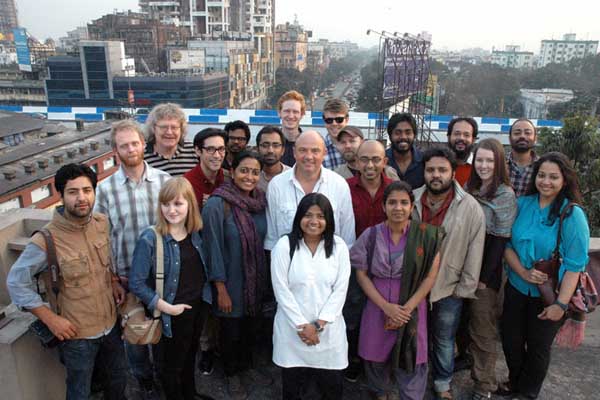
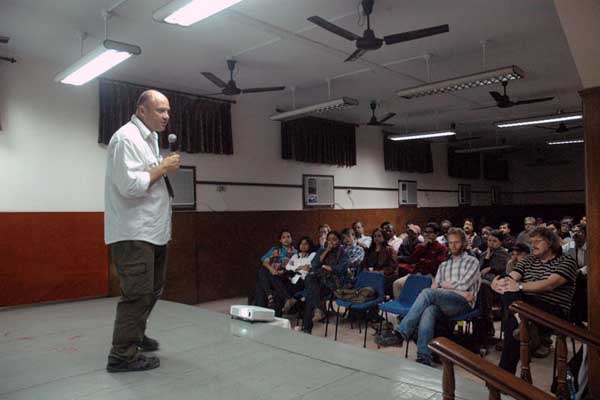
Greg Sebastian Marinovich is the only one of the ‘Bang Bang Club’s’ four members to be standing on his feet today. Two are dead and the third’s legs have been amputated. Between them, they share two Pulitzers and a host of other prestigious awards from all over the world. Greg, 50, co-authored a book on the ‘club’ that was made into a film two years ago. And what a film it was: a visual narrative on the lives of four ‘conflict photographers’–all white South Africans who grew up in the apartheid regime, opposed it and exposed the apartheid regime-sponsored violence to the world-whose lives intertwined and took them to many parts of the world to record telling images of war and strife.
Greg, who was in Kolkata to conduct a workshop for photographers from India, Nepal and?Bangladesh?(Editor’s note: organised by Pathshala in Bangladesh and Oslo University College in Norway), told TOI about his work and experiences. Continue reading “Chronicler of conflicts”
Happy February!
We are in the middle of a very stimulating workshop with 14 Bangladeshi, Nepali and Norwegian students and award winning photographer Philip Blenkinsop. The workshop is the beginning of an extended exchange program where participating students will produce an in-depth photo reportage project.
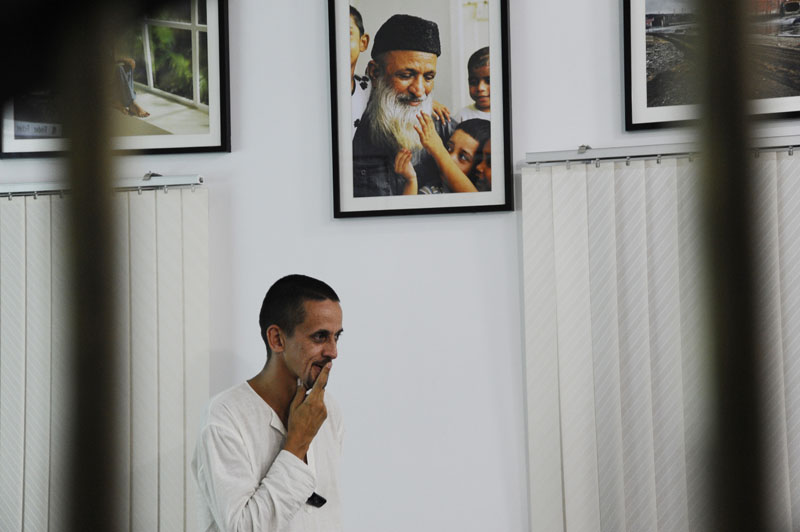
Philip Blenkinsop has been described as “one of the most essential photographers of his generation” (Christian Caujolle). He is adamant that the photographer should never censor scenes through the camera. ?Photographers are both witnesses and messengers. Our responsibility must always lie with the people we focus on, and with the accurate depiction of their plight, regardless of how unpalatable this might be for magazine readers.? His work, published in international arenas, has been the catalyst for much discussion and amongst other accolades was awarded Amnesty International?s Photojournalism prize for excellence in human rights journalism. Continue reading “”
Frank Fournier at Pathshala
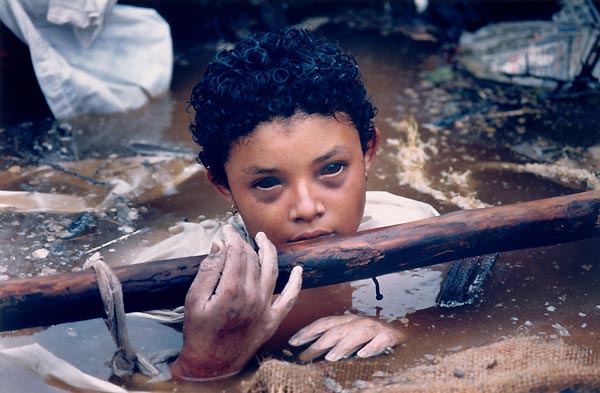
Pathshala, the South Asian Media Academy takes pleasure in inviting you to the presentation of Frank?Fournier in Pathshala.
Frank Fournier is a French photographer. He originally studied?medicine before becoming a photographer. He moved to New York and?became a staff photographer at Contact Press Images in 1982 after joining the office staff in 1977. His portrait of Omayra Sanchez, a 13-year-old trapped under the debris of her home, won the 1986 World?Press Photo award.
Frank is currently in Bangladesh to conduct a workshop on international reporting at Sylhet in the north east of Bangladesh. He is one of three international photographers, the others being Greg Marinovic (Kolkata), and Philip Blenkinsop (Kathmandu), who will be lead trainers in workshops involving photographers in Bangladesh (organised by Pathshala), India (organised by Drik India) and Nepal (organised by Photo Circle). Pathshala tutors Munem Wasif (India), Tanzim Ibne Wahab (Nepal) and Debashish Shom (Bangladesh) who along with Per Anders Rosenkvist of Oslo University College (OUC) ?in Norway,?will provide mentoring throught the workshop.
Pathshala has been actively collaborating with OUC for over six years, and students from Bangladesh, Nepal and Norway have been involved in exchanges supported by the Norwegian Ministry of Foreign Affairs.
Frank’s presentation follows talks by David Burnett (December 2011) and Pep Bonet (January 2012) and is part of the regular teaching programme at Pathshala.
The schedule of the presentation:
Date: February 04, 2012
Day: Saturday
Time: 6.00 pm
Venue: Pathshala (Room # 1)
Principles for Interpreting Photographs
Does a photograph speak for itself ? A photograph is different from an ordinary object because it is about something. Because it is about something, it requires interpretation to function as a photograph or as an artwork. One of the best ways to appreciate an image is to observe, think and talk about it. Interpretation is central to looking at all images, historical and contemporary, those we call ‘fine art’ as well as those daily seen in visual culture. Photographs provide insight, information and knowledge only if we interpret them.
5 PM – 7 PM
Thursday, 11th August 2011
The Bakery Cafe, Sundhara
About Hasib Zakaria
Hasib Zakaria is a Bangladeshi photographer who graduated from Pathshala, South Asian Media Academy in 2003. Since then, he has been lecturing at Pathshala, and is now the new vice principal. Hasib is currently a PhD candidate at Vrije University Brussels.
NayanTara Gurung
